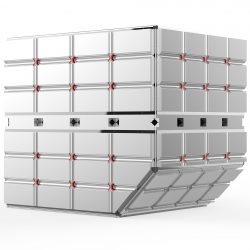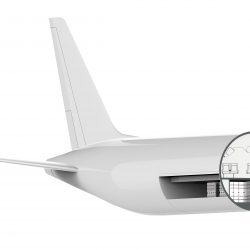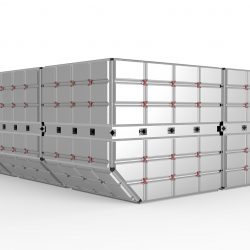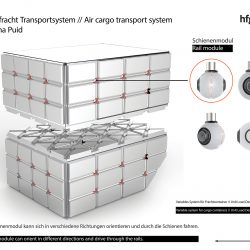Luftfracht Transportsystem – Variables System für Frachtcontainer // Air cargo transport system – A variable system for cargo containers
Description
The design is a variable transport system for air cargo consisting of cargo containers with an integrated rail system. The system allows better and faster access to the containers to optimize the loading process. Containers can be moved diagonally, vertically and horizontally in cargo compartment, which was not possible before.What is the Topic?
The focus lies on loading and transporting air cargo. The loading problem is that at the stopovers of a flight, part of the containers and cargo have to be unloaded before the flight continues. This process is time-consuming because workers don't have access to all containers that are not near the door through which they must be unloaded. Containers can only be rotated near the door. The rail system simplifies the repositioning of the containers in the cargo compartment to optimize loading and unloading of air cargo.
Why does it look like this?
The aesthetics of the product result from the functionality, dimensions and shape within the given regulations, norms and standards of the "International Civil Aviation Organization". The product accordingly has standardized dimensions and shape which is adapted to the cross section of the fuselage. For the design, the LD3 container was chosen because it is the most used container. The structure of the rail system is derived from the surface dimension, shape and function, which allows the containers vertical, horizontal and partially diagonal movement. The depression at the junctions allows the rail module to sink in and out when needed.
What is special?
The rail system simplifies the repositioning and moving of the containers to provide faster access to them. This allows individual containers to move and along the rails of adjacent containers. This is done by integrated rail modules that can move in different directions through the rails. The modules can exit if necessary and sink into their profile again. Due to the structure of the rail system, containers can move freely in the compartment horizontally, vertically and diagonally, which was not possible before. In addition, the design also transfers to the cargo compartment of the aircraft. The compartment walls are provided with the same rail system to allow the containers to move along the walls and rails. The system provides better and faster access to the containers in order to optimize the loading and unloading of the aircraft with air cargo.
What is new?
Cargo containers have not changed for more than 60 years, although there is an important problem in the air cargo industry. They are metal boxes in which cargo is stored. The innovation this product offers is that containers function not only as individual objects, but as a system and in interaction with each other. In the future, the system can function both as an autonomous system and/or externally controlled. Currently, there are no containers with such a rail system in logistics. The system could also be transferred to other logistic systems. The entire system is designed to be variable/modular.






